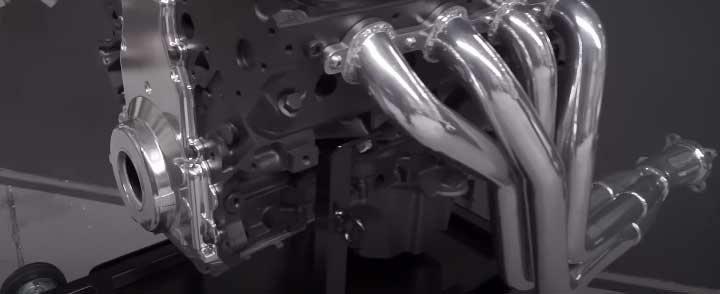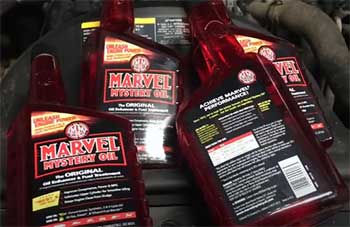The debate has raged on for years among gearheads and auto enthusiasts: Jet Hot Coating or Ceramic Coating, which one truly reigns supreme? And more importantly, which one is the best fit for your exhaust system?
By diving into the key features, pros and cons, we’ll give you a better understanding to make an informed decision.
A Brief Comparison Table
| Feature | Jet Hot Coating | Ceramic Coating |
| Formulation | Proprietary blend designed for high corrosion resistance and heat management. | Variable depending on the product, designed for heat reduction and corrosion resistance. |
| Performance | Superior in terms of heat reduction and corrosion resistance. | Good performance but can vary in quality and may not perform as well as Jet Hot in extreme conditions. |
| Application | Requires professional application. | More DIY-friendly, can be applied at home with care. |
| Durability | Extremely durable and can withstand demanding conditions. | Generally less durable, especially under extreme conditions. |
| Price | One of the pricier options due to the high-performance formula and professional application. | Generally more affordable and can offer good value for money. |
The Basics: What are Jet Hot and Ceramic Coatings?
First, it’s important to understand what each product brings to the table. Both Jet Hot and ceramic coatings are exhaust coatings designed to improve your vehicle’s performance by reducing heat and wear.
But the specifics, that’s where they differ.
Jet Hot Coating, a brand name that’s become synonymous with high-performance coatings, offers a proprietary formula boasting of superior corrosion resistance and heat management.
On the other hand, Ceramic Coating refers to a broad category of high-temperature coatings used to reduce heat and resist corrosion in exhaust systems. They can range in quality, but we’ll be focusing on the best of the best here.
Jet Hot Coating: The Pros and Cons

Jet Hot has built a reputation in the automotive world for being a reliable, high-performing exhaust coating. But like anything else, it has its strengths and weaknesses.
Pros of Jet Hot Coating
- Superior Corrosion Resistance: Jet Hot coatings shine in their ability to resist corrosion. This characteristic makes them an excellent choice for vehicles in harsh environments or those that don’t see regular use.
- Heat Management: Jet Hot’s standout feature is its capacity to drastically reduce radiant heat, making it perfect for cramped engine bays where heat soak can become a problem.
Cons of Jet Hot Coating
- Price: Jet Hot’s high performance doesn’t come cheap. It’s one of the most expensive options on the market.
- Limited DIY: Unlike ceramic coatings, applying Jet Hot coating isn’t a project for a Sunday afternoon. The application process requires professional tools and knowledge.
Ceramic Coating: The Pros and Cons

Ceramic coatings have long been a go-to for many seeking improved performance and aesthetics from their exhaust. But they’re not without their drawbacks.
Pros of Ceramic Coating
- Affordability: Compared to Jet Hot, ceramic coatings are significantly more affordable, making them a great option for budget builds.
- DIY-Friendly: Many ceramic coatings come in user-friendly spray cans, making them a more approachable option for DIY enthusiasts.
Cons of Ceramic Coating
- Variable Quality: Ceramic coatings vary in quality. Lower-end products may not offer the same level of heat reduction or corrosion resistance as Jet Hot.
- Durability: While ceramic coatings do a decent job at resisting heat and corrosion, they’re not as durable as Jet Hot, especially under extreme conditions.
Key Differences Between Jet Hot and Ceramic Coatings
The automotive performance world is a complex arena, filled with competing products and overlapping claims. Jet Hot and ceramic coatings are no exceptions. While both types of coating serve the same purpose, they exhibit key differences in their formulation, application, durability, and price.
- Formulation and Performance
Jet Hot Coating is composed of a unique proprietary blend that’s built to withstand harsh conditions. This specialized formulation is engineered to resist corrosion to an outstanding degree, setting it apart in the performance coating industry.
The coating’s high corrosion resistance is especially useful in environments with high salinity or humidity, as it can effectively protect against salt spray, road grime, and other corrosive substances.
Additionally, Jet Hot stands out with its impressive heat management. It drastically reduces radiant heat, which can be crucial for vehicles with compact engine bays where heat soak can negatively impact performance.
On the flip side, Ceramic Coatings are a broader category of high-temperature coatings that vary significantly in their formulation. The performance and benefits of a ceramic coating can vary widely based on the specific product and its formulation.
However, high-quality ceramic coatings are designed to offer heat reduction and corrosion resistance, though not typically to the same degree as Jet Hot. The heat reduction offered by these coatings can be substantial but is usually less pronounced than the reduction achieved with Jet Hot.
- Application and Accessibility
Another key difference between Jet Hot and ceramic coatings lies in their application process.
Jet Hot Coating requires professional application due to its unique formula and application process. The coating needs to be applied evenly and cured under specific conditions to ensure optimal performance, a process that necessitates professional-grade equipment and expertise.
This factor makes Jet Hot less accessible to the average DIY enthusiast.
In contrast, many ceramic coatings are far more accessible and DIY-friendly. They often come in easy-to-use spray cans or paint-on formulas. This accessibility allows for more flexibility in the application process, though it still requires careful preparation and application for optimal results.
- Durability and Lifespan
Jet Hot Coating offers excellent durability. Its high resistance to heat and corrosion makes it a long-lasting solution, especially in demanding conditions. This high durability can contribute to a longer lifespan for your exhaust system by protecting against wear and tear.
On the other hand, ceramic coatings generally offer less durability than Jet Hot. While they can effectively resist heat and prevent rust, they tend not to perform as well under extreme conditions or over long periods. The lifespan of a ceramic coating will largely depend on the specific product and the conditions it’s exposed to.
- Price Point
Lastly, there’s a significant difference in the price point between Jet Hot and ceramic coatings. Jet Hot is one of the pricier options on the market due to its high-performance formula and the professional application required.
Conversely, ceramic coatings tend to be much more affordable, making them a popular choice for budget builds or DIY projects. The price can vary widely depending on the specific product, but they are generally less expensive than Jet Hot.
Also Read: Differences Between Jet Hot And Cerakote Coatings.
Frequently Asked Questions (FAQ)
The ‘best’ coating largely depends on your individual needs. If you need superior corrosion resistance and don’t mind a higher price tag, Jet Hot may be the right fit. However, if you’re looking for a more affordable option that still offers solid performance, a high-quality ceramic coating could be the way to go.
Absolutely, Jet Hot coatings work excellently in reducing radiant heat and offering corrosion resistance. However, they’re not without their drawbacks like the high price and need for professional application.
Again, it depends on your individual needs. For superb heat reduction and corrosion resistance, Jet Hot stands tall. For those on a budget or DIY inclined, a good ceramic coating could suffice.
Ceramic coating’s main downsides are its variable quality and lower durability compared to Jet Hot. It’s also worth mentioning that while they’re more DIY-friendly, applying a ceramic coating still requires some know-how to ensure a proper, even coating.
Wrapping Up
The battle between Jet Hot and Ceramic Coating isn’t as cut and dry as it may seem. Both have their merits and potential drawbacks. The decision, ultimately, comes down to your individual needs and circumstances.
Whether you’re a die-hard Jet Hot fan or a believer in the virtues of Ceramic Coating, the fact remains: a well-applied, quality exhaust coating can bring about noticeable performance improvements.
So, weigh your options, consider your needs, and choose wisely.

